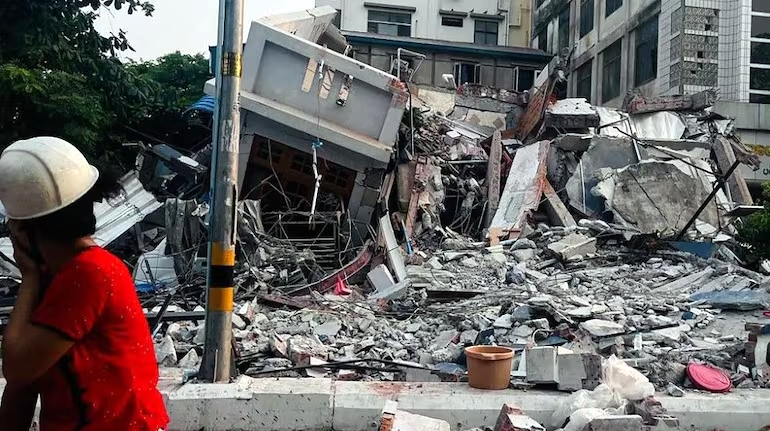
The fragile India-Myanmar border region has once again reminded us of its volatile nature. In the last 36 hours, a series of six earthquakes have shaken the area, sending ripples of concern across India’s northeast and Myanmar.
The quakes, ranging in magnitude from 3.8 to 4.5 on the Richter Scale, were felt across several regions, including Manipur, with the most recent tremor recorded at 11:21 AM on Tuesday, measuring 4.3.
A Seismically Sensitive Zone
This border region is no stranger to tremors. It lies within one of the most active tectonic zones in the world, where the Indian and Eurasian plates collide. The constant stress and movement in this zone make earthquakes an ever-present risk.
Two major geological features contribute to the frequent seismic activity:
- The active subduction zone in the Andaman-Nicobar Islands, where one plate slips beneath another.
- The Sagaing Fault in Myanmar, a major strike-slip fault that cuts through the country and plays a significant role in the region’s instability.
These geological dynamics keep the area under continuous strain, resulting in regular seismic events.
The latest quakes follow the devastating 7.7 magnitude earthquake that struck Myanmar on March 28, claiming over 3,700 lives and wreaking havoc across towns and villages. The quake, one of the deadliest in the region’s history, was felt as far as Thailand and left nearly 200,000 people displaced.
According to the International Federation of Red Cross and Red Crescent Societies (IFRC), many survivors are still living in makeshift shelters or outdoors, vulnerable to both aftershocks and weather extremes.
Even now, parts of central Myanmar continue to be rattled by daily aftershocks, complicating relief efforts and traumatizing communities that have already lost everything.
A Call for Preparedness
These recurring earthquakes are a stark reminder of the urgent need for disaster preparedness, improved infrastructure, and early warning systems—especially in border regions and seismic hotspots.
For residents of northeastern India and Myanmar, the earth beneath their feet remains unpredictable, and vigilance is not just advised—it’s essential.

Such a fascinating insight into the geological dynamics of northeastern India and Myanmar! It’s incredible how the earth’s movements shape the lives of people in such profound ways. I wonder how the local communities adapt to this constant unpredictability—do they have specific traditions or practices to cope with it? The idea of living with such awareness must be both challenging and humbling. It makes me think about how much we take stability for granted in other parts of the world. What measures are being taken to improve safety and preparedness in these regions? I’d love to hear more about the efforts to mitigate the impact of these seismic events.
We’ve integrated libersave into our regional voucher system. It’s amazing how easily it brings together various providers on one platform!